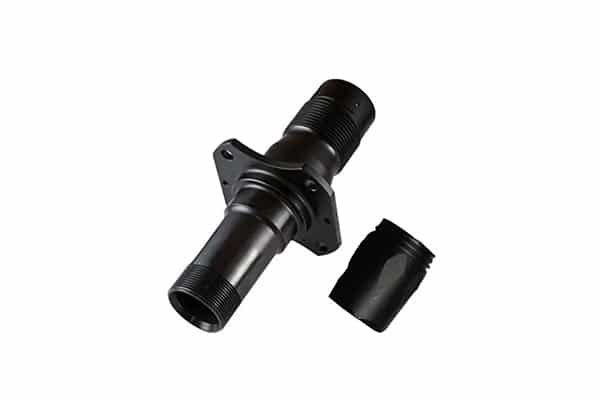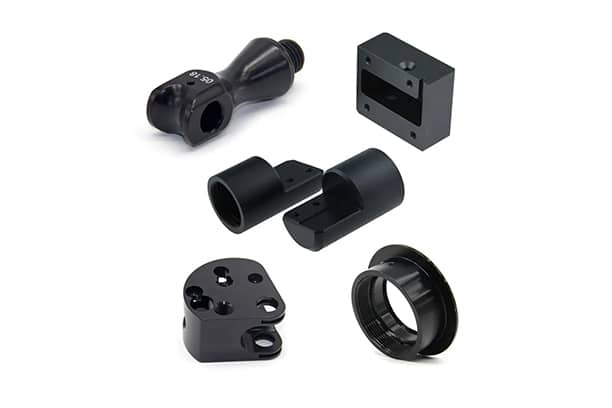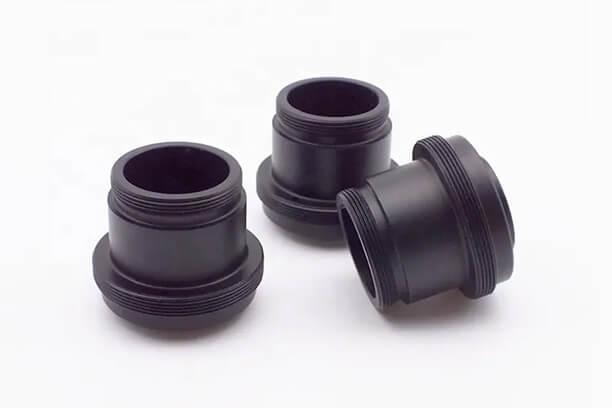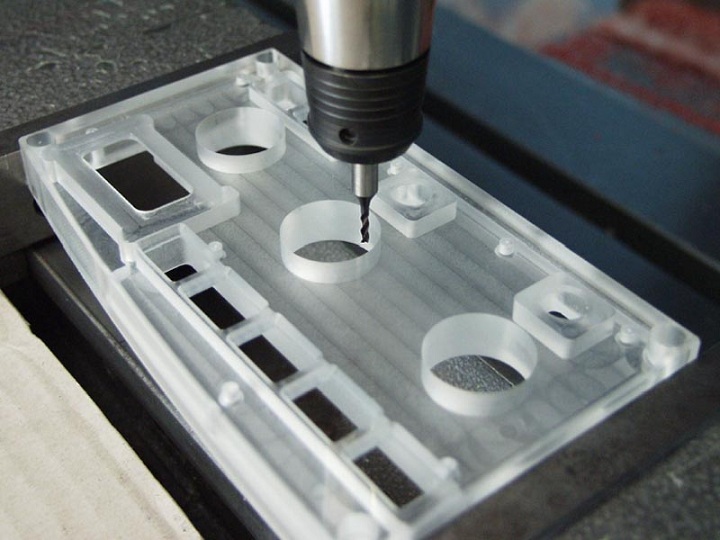ABS or Acrylonitrile Butadiene Styrene, a thermoplastic material unifying different properties of PS, SAN, and BS, is extensively utilized in numerous industries. With its cost-effectiveness, good machinability, and exceptional mechanical properties, ABS is widely used in consumer goods and also finds significant application in the automotive industry.
ABS CNC machining is a speedy process for creating both prototypes and end use products. It not only saves cost as it doesn’t require costly injection molds but also ensures the parts are precisely fabricated and shaped. CNC machined ABS parts are ideal choices for production-like parts that require details and tight tolerance. In this article, we’ll discuss what goes into ABS CNC machining.
What Is CNC Machining ABS?
CNC machining ABS involves removing excess material and performing cutting, turning, or milling operations as required to achieve the desired end product in the final form by utilizing computer-controlled digital technology. This can be accomplished with machine tools that are programmed according to specific requirements. CNC machining Acrylonitrile Butadiene Styrene is an economical method for generating custom-shaped parts without the need for costly molds, making it an excellent choice for prototypes and low-volume production. Moreover, CNC machined ABS shows exceptional properties of rigidity, toughness, and shock absorbance, particularly considering the relatively low cost of the material.

What Are the Benefits of ABS CNC Machining?
There are numerous advantages of using ABS in a CNC machining project. CNC machining eliminates the need to create a mold, making it a cost-saving method to make parts with complex geometries at an advantageous price and precision tolerance. Furthermore, ABS boasts robust mechanical properties and high impact strength. It also possesses excellent electrical insulation and can adapt to diverse environments. Additionally, ABS exhibits a range of remarkable features, such as high chemical resistance, impact strength, hardness, and commendable dimensional stability.
- With high impact strength and respectable surface hardness over a relatively broad temperature range, as well as a higher heat deflection temperature than PVC and PA, ABS is a resin with favorable comprehensive characteristics and excellent dimensional stability.
- ABS exhibits impressive mechanical properties, such as excellent impact strength, enabling it to be employed at very low temperatures.
- ABS features excellent electrical insulation, virtually impervious to changes in temperature, humidity, and frequency, rendering it suitable for employment in diverse environments.
- ABS resists the detrimental effects of various substances such as water, inorganic salts, alkalis, alcohols, hydrocarbon solvents, and numerous acids. However, it is susceptible to stress cracking from the degradation caused by vegetable oils and ice acetic acid.
ABS CNC Machining Applications
CNC machining is ideal for producing an array of end-use parts and prototypes made from ABS. ABS is employed in making frames, casings, gears, instrument paneling, dashboards, seat backs, vacuums, toys, and several other products. Various sectors, including medical, automotive, electrical, and construction industries, utilize ABS CNC machining.
- Locks
- Hinges
- Gears
- Housings
- Bearings
- Electrical plugs
- Valves
- Zippers
- Plumbing
- Hose couplings
- Electrical sockets
- Ammunition casings
FAQs of CNC ABS Machining
Renowned for its exceptional machinability, high impact strength, and toughness, resilience, ABS is a popular thermoplastic material utilized in CNC machining, 3D printing, and injection molding, especially for prototyping applications. CNC machining ABS is a perfect solution for projects in which mechanical properties and details hold importance, including fit testing, concept modeling, and functional prototyping.
ABS plastic, an affordable engineering plastic, finds extensive usage in creating prototypes and end use products. For parts that require fine detail and mechanical properties, CNC machined ABS can be a suitable alternative.
The CNC milling technique can either cut or engrave ABS plastic, depending on the project’s desired outcome.
For sheets of material with a thinner profile, Scotch Permanent Double-Sided Tape is a suitable option, whereas for thicker sheets and blocks, high-strength double-sided tape is recommended. However, hot glue should be avoided owing to the fact that ABS, capable of melting easily, can deform in response to heat, which is the factor that renders it useful for vacuum forming.
ABS operates efficiently at most feeds and speeds while using smaller tools. However, when using larger tools like 1/8″ end mills, is crucial to maintain an appropriate balance between spindle speed and material feed rate to prevent the production of excessive heat, which can cause shredded material to adhere to the bottom of the cut.
Work with Runsom Precision to Get Custom ABS Plastic Parts

If you’re looking for top-quality ABS parts, it’s recommended to collaborate with a skilled manufacturer. Runsom Precision is a dependable choice to fulfill your ABS CNC machining project requirements. We cater to your specific needs, whether it’s high precision, prompt, or extremely complex. Our heat-resistant, long-lasting, and BPA-free custom cut ABS plastic parts have a wide range of applications, from the food sector to aerospace engineering. Initiate your project with us with an instant quote online.
Other Articles You May Be Interested in:




